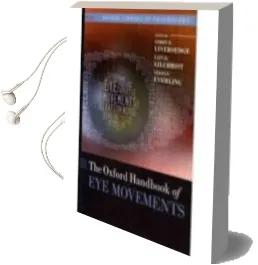Descargar AudioLibro The Oxford Handbook of eye Movements de Simon P. Liversedge

Ficha completa del audiolibro
- Nombre del audiolibro: The Oxford Handbook of eye Movements
- Autor del audiolibro: Simon P. Liversedge
- Fecha de publicación: 17/5/2011
- Editorial: OXFORD UNIVERSITY PRESS
- Idioma: Inglés
- Género o Colección: Psicología y Pedagogía
- ISBN: 9780199539789
- Valoración del audiolibro: 9.06 de un máximo de 10
- Votos: 210
- Autor(a) de la reseña: Raymunda Cueyo
- Reseña valorada con una puntuación de 9.07 de un máximo de 10
- Fecha reseña: 11/7/2018
- Duración: 13 horas con 2 minutos (524 MB)
- Fecha creación del audiolibro: 24/06/2018
- Puedes escuchar el audiolibro en estos formatos: WMA - MPEG4 - MP3 - AU - FLAC - MPEG-4 ALS - WAV - AAC (compresión ALZ - ZIP - XZ - RAR - IMG - Z - LZ)
- Incluye un resumen PDF de 93 páginas
- Duración del resumen (audio): 1 hora con 8 minutos (46.5 MB)
- Servidores habilitados: Google Drive - MEGA - 4Shared - Dropbox - OneDrive
- Encuadernación del libro físico: Tapa Dura
- Descripción o resumen: In the past few years, there has been an explosion of eye movement research in cognitive science and neuroscience. This has been due to the availability of 'off the shelf' eye trackers, along with software to allow the easy acquisition and analysis of eye movement data. Accompanying this has been a realisation that eye movement data can be informative about many different aspects of perceptual and cognitive processing. Eye movements have been used to examine the visual and cognitive processes underpinning a much broader range of human activities, including, language production, dialogue, human computer interaction, driving behaviour, sporting performance, and emotional states. Finally, in the past thirty years, there have been real advances in our understanding of the neural processes that underpin eye movement behaviour. The Oxford Handbook of Eye Movements provides the first comprehensive review of the entire field of eye movement research. In over fifty chapters, it reviews the developments that have so far taken place, the areas actively being researched, and looks at how the field is likely to devlop in the coming years. The first section considers historical and background material, before moving onto section 2 on the neural basis of eye movements. The third and fourth sections looks at visual cognition and eye movements and eye movement pathology and development. The final sections consider eye movements and reading and language processing and eye movements. Bringing together cutting edge research from and international team of leading psychologists, neuroscientists, and vision researchers, this book is the definitive reference work in this field.















































